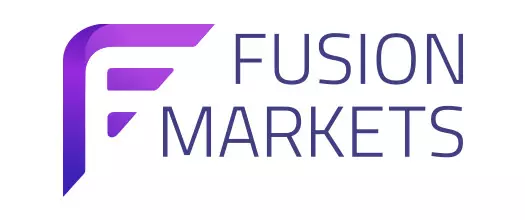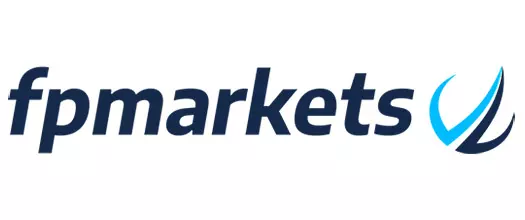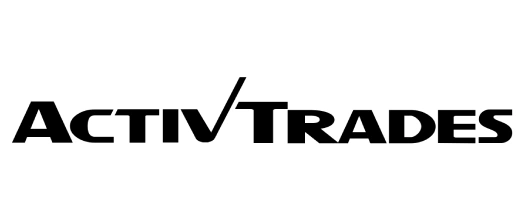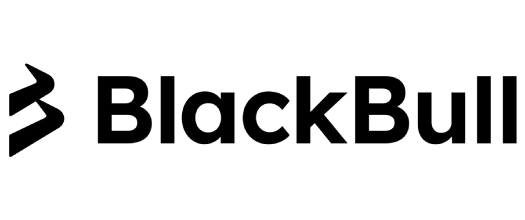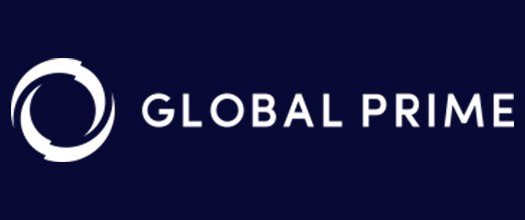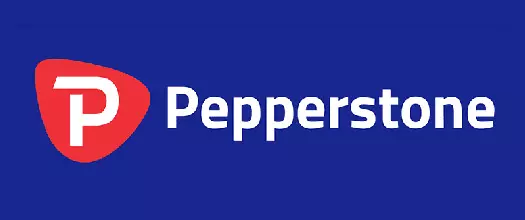- Jump to:
- Main features of the best Netherlands Forex brokers
- Forex Legislation
- Financial Regulators
- Payment Methods
- Trading Software
- Mobile Trading
- FAQ
Our team of expert traders tested many regulated and trustworthy forex brokers that accept traders from Netherlands and compiled a toplist with the best among them. Each broker operating in Netherlands received a quality score based on several factors, including Trustpilot rating, regulation, fees and commissions, available trading platforms, customer service and more.
 Fusion Markets74-89% of retail's CFD accounts lose money
Fusion Markets74-89% of retail's CFD accounts lose money FP Markets73.85% of retail investor accounts lose money
FP Markets73.85% of retail investor accounts lose money ActivTrades73% of retail investor accounts lose money
ActivTrades73% of retail investor accounts lose money BlackBull MarketsTrading leveraged products is risky
BlackBull MarketsTrading leveraged products is risky Global Prime74-89% of retail CFD accounts lose money
Global Prime74-89% of retail CFD accounts lose money Pepperstone75.5% of retail investor accounts lose money
Pepperstone75.5% of retail investor accounts lose money
Below you can find a comprehensive comparison table of forex brokers for traders in Netherlands. We rank them based on several factors including: regulation, spreads and commissions, Trustpilot rating, trading instruments, trading platforms, deposit and withdrawal methods.
Our team has thoroughly evaluated all brokers listed below using TradingPedia’s exclusive methodology.
Main features of the best Netherlands Forex brokers
- Brand
- Trading platforms
- Minimum deposit
- Regulations
- Trading instruments
- Spreads
- Leverage for Forex CFDs
- Leverage for Crypto CFDs
- Leverage for Indices CFDs
- Deposit methods
- Withdrawal Methods
- Commission per Lot
- Contact details
The Netherlands is a small country in Northwestern Europe renowned for its rich culture, boundless tulip fields, innovative water management, and windmills. It is one of the six founding members of the European Union (EU), along with Luxembourg, Belgium, Italy, France, and Germany.
Remarkable for its low-lying terrain, the country has been occupying an important position in Western Europe’s economic development ever since World War II. Its economy ranks as the 17th biggest on a global scale as of 2019 according to data compiled by the World Bank and the International Monetary Fund. The Dutch get to enjoy a highly prosperous open economy whose main characteristics include high trading surplus, low levels of inflation, and good industrial relationships.
The capital is where the Amsterdam Stock Exchange is located. The latter was founded at the beginning of the 17th century, which makes it one of the oldest securities exchanges in the world. In the fall of 2000, it merged with the stock exchanges of Paris and Brussels to create Euronext, the biggest cash equities market on the Old Continent.
The Netherlands is also renowned for its healthy and well-regulated foreign exchange trading scene. Its main partners in trade are other stable economies like France, the United States, the United Kingdom, Belgium, Russia, and Germany.
The country ditched the Dutch guilder for the Euro in 2002. The Forex sector is thriving in the Netherlands, with many brokers being able to service Dutch traders provided they do so in compliance with the rules of the Autoriteit Financiële Markten (AFM).
The Netherlands Forex Legislation
Forex brokers can legally operate in the Netherlands as long as they receive official authorization from the local regulator, the AFM. The Dutch regulatory framework largely overlaps with the requirements outlined by the European Securities and Markets Authority (ESMA).
Licensed brokers must be fully transparent about their operations and provide the local watchdog with regular reports about their trading volumes. They also need to notify the AFM in case their issued capital has fluctuated by more than 1% within three months.
The companies are expected to submit recurring financial statements. This enables the AFM to closely monitor the financial activities of its licensees and make sure they remain compliant with its policies. It also prevents them from indulging in any fraudulent or unfair practices.
Perhaps more importantly, Forex companies looking to provide trading services in the Netherlands must establish local offices and receive the necessary permits before they can start doing business. Under MiFID rules, brokers licensed in other top-tier EU jurisdictions are authorized by the AFM to legally operate in the country.
The companies’ operational capital and their customers’ funds should be stored in segregated accounts. The policy aims at ensuring the safety of clients’ money in the event of a given brokerage declaring insolvency.
These rigorous operational guidelines serve as a major incentive for local Forex traders. They can enjoy high levels of safety along with better trading conditions without having to stress about the risks associated with financial scams and irregularities.
The website of the Dutch regulator contains a very useful registry that enables local traders to verify whether a given firm is authorized before they choose its services. Public notices about malpractices and newsletters are published regularly so that the Dutch public can stay abreast of the latest financial frauds.
The Forex regulatory structure in the Netherlands undergoes routine updates to ensure it upholds the current standards of supervision in Europe. One of the latest changes occurred in 2019 and concerns the regulations that govern retail trading with contracts for difference (CFDs) and binary options.
Effective since April 2019, the new guidelines disallow the advertising, distribution, and sale of binary options to retail traders from the Netherlands. Permanent restrictions were imposed on offering CFDs as well, in line with the prescriptions ESMA issued earlier. The measures apply to companies based in the Netherlands as well as to those that hail from other member states of the European Union.
Brokerage firms that enable Dutch clients to trade CFDs with margin must adopt negative balance protection policies similarly to other EU countries like France and Germany. This measure prevents retail customers who trade with leverage to lose more money than what they have in their available account balance.
Each CFD broker must publish a standardized risk warning on its website to show what percentage of its retail customers lose their money due to leverage. CFD providers are also prohibited from incentivizing new clients with bonuses.
Maximum leverage caps on opening positions are in place to prevent inexperienced investors from suffering significant losses. The exact limit is product-specific and varies based on the respective instrument’s volatility.
The rule of thumb is the riskier the product, the lower its maximum allowed leverage. Respectively, the leverage ceiling is capped at 30:1 for major Forex pairs, 20:1 for minor/exotic pairs, major indices and gold, 10:1 for other commodities, 5:1 for individual equities, and 2:1 for cryptocurrencies.
The Netherlands Financial Regulators
The Dutch Authority for the Financial Markets (Autoriteit Financiële Markten or AFM) is the main overseer of the financial markets and services in the Netherlands. The AFM was set up at the beginning of March 2002 as a replacement for the previous regulator, the Securities Board of the Netherlands.
The legislation that led to the creation of the AFM greatly expanded its scope of supervisory responsibilities. The AFM is now tasked with overseeing a broad range of financial products, including insurance, savings, foreign exchange trading, stock exchanges, and investments. The AFM is an autonomous administrative entity but is still accountable to the Dutch Ministry of Finance.
The Dutch regulator participates in the European Securities and Markets Authority (ESMA). The latter is an independent body whose main purposes are to ensure the stability of the EU financial system, safeguard investors, and promote balanced financial markets. Because of its ESMA membership, the AFM aligns most of its regulatory policies with the guidelines of the EU financial regulator.
There are several important aims the AFM pursues, including promoting confidence in the local markets, assisting traders in dispute resolution, sanctioning violators, and ensuring smooth operations for all marker participants. The AFM operates in conjunction with the central bank of the Netherlands (De Nederlandsche Bank), which is a member of the European System of Central Banks (ESCB).
The Netherlands Forex Payment Methods
It is the norm for Forex brokerages to try and expand their market share by offering their customers multiple account types and a broader choice of payment methods. Most Dutch-friendly companies offer demonstration accounts funded with virtual credits traders can use to practice or test strategies.
Once Dutch customers have gained sufficient experience with the demo, they can open live accounts and fund them so they can invest real money into the Forex markets. Netherlands-friendly brokers offer multiple ways to deposit and withdraw money, including standard wire transfers and credit or debit cards by Visa and Mastercard.
Virtual wallets are also rather common at Dutch-friendly brokerages. Although Skrill and Neteller are widespread, PayPal beats them in terms of popularity – it is the preferred method of payment of more than 1.6 million Dutch residents. No matter which of the three options you choose, you need to undergo registration, verify your account, and fund the balance of your new e-wallet.
Some brokers cater to traders from the Netherlands with locally available payment methods like iDeal. This e-payment system is broadly implemented in the country, allowing users to conduct online money transfers directly from their bank accounts.
To use iDeal, Dutch traders must have accounts with an associated bank and sign up for its online banking services. The iDeal platform is supported by most major banks in the country, including RegioBank, ABN AMRO, Handelsbanken, ASN Bank, Van Lanschot, SNS Bank, ING, bunq, and Knab. Payments are completely secure with iDeal because the transactions are carried out via the respective banks’ online banking platforms.
Two other locally available methods you are likely to see at Netherlands-friendly brokers are Sofort and Trustly, both of which function on the same principles as iDeal, i.e. you need an online banking account at an associated financial institution. Payments carried out with any of the three platforms are safe, time-efficient, and cost-effective.
Before they pick a broker, traders from the Netherlands should check its minimum deposit requirements and lot sizes. These minimums very often depend on the type of live account one registers for.
Micro accounts are more suitable for novices and require a significantly smaller initial investment compared to the premium VIP accounts professionals prefer. We suggest you choose the EUR as your live account’s base currency so you can dodge the additional fees for currency conversion.
Popular Trading Software in the Netherlands
Many brokers operating on the Dutch market are practically the local branches of major trading providers based outside the Netherlands. Because of this, the software local Forex investors encounter most frequently is usually the same, the MetaTrader 4 (MT4).
Courtesy of the Cyprus-based developer MetaQuotes Software, MT4 has established itself as a standard in the Forex trading community. This is the platform of choice of traders all over the world and Dutch investors are not an exception. The MT4 has a simple and user-friendly layout that appeals to novice traders. More experienced users are attracted by the platform’s broad range of tools for market analysis.
Also featured is a customizable chart station that enables users to manually impose graphical objects onto their charts. There is a choice from three chart styles for displaying price movements – Japanese candlesticks, bars, and lines. It is possible to place orders by clicking directly on a chart.
Many brokers to service this region offer MetaTrader 5 (MT5) in parallel with its successor MT4. As a rule of thumb, MT5 is considered more suitable for well-versed traders who want to expand their portfolio with additional instruments like stocks, futures, options, and bonds.
Other common platforms for Dutch traders, albeit not as popular as the ones we previously mentioned, are cTrader, ZuluTrade, and the Sirix WebTrader. Some foreign exchange brokers develop proprietary trading software and offer it to Dutch customers concurrently with the platforms created by third-party companies like MetaQuotes.
Mobile Trading in the Netherlands
Desktop computers begin to gradually give way to mobile devices, which are broadly implemented for a variety of purposes, including online purchases, staying in touch with family and friends via social media platforms, browsing, and gaming. In the Netherlands alone, the number of active smartphone users exceeded 14.9 million people as of 2018.
Furthermore, the monthly smartphone usage is expected to rise in the years to follow reaching 16.6 million individuals by 2024 and penetration rates of over 96%. The Dutch Forex community has also jumped on the mobile bandwagon. An increasing number of investors from the country prefer to execute their orders on smartphones or tablets instead of being chained to their desktop computers.
Luckily, the Dutch cannot complain they lack options where mobile trading is concerned. The majority of brokers on the local market provide mobile access via downloadable apps that work on Android and iOS. The exact features and design of the apps vary between brokers, depending on whether they use propriety or third-party software.
Nevertheless, the apps are beyond useful because they provide Dutch traders with access to the Forex markets and their accounts at any given moment. Investors from the country have a chance to execute orders on the fly, monitor their open positions in real time, and track their portfolios.
The apps of the best Dutch-friendly brokers are inevitably easy to use and perform well across a variety of portable devices. Users can observe price movements in real time, trade a broad range of currency pairs as they go, and manage their portfolios in their native Dutch language.
